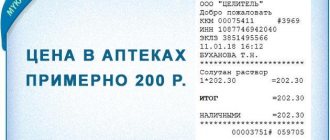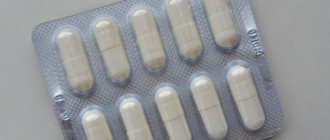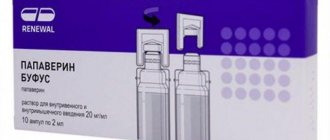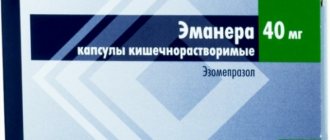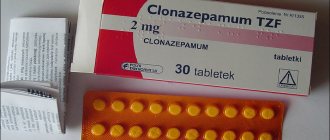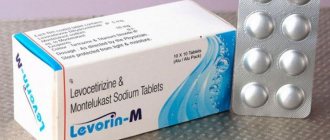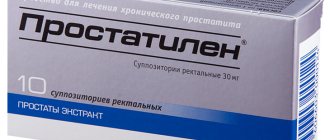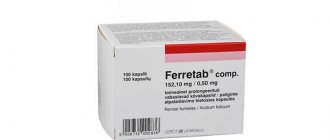Tantum Verde is a medicine for sore throat and inflammation of the oral cavity in the traditional form as a gargle solution in 240 ml packages, the main active ingredient of which is benzydamine .
Used for inflammatory diseases of the mouth and throat, mechanical and other injuries or dental surgeries in the oral cavity.
Benzidamine (also known as Tantum Verde and known in some countries as Difflam and Septabene), available as the hydrochloride salt, is a topical nonsteroidal anti-inflammatory drug (NSAID) with local anesthetic and analgesic properties for the relief of pain and anti-inflammatory treatment of typically local inflammatory conditions. associated with the mouth, throat or musculoskeletal system.
Although the indazole analogue benzydamine is a non-steroidal anti-inflammatory drug (NSAID), it has various physicochemical properties and pharmacological activities that differ from those of traditional aspirin-like NSAIDs but facilitate the mechanism of action of benzydamine as an effective topical NSAID with local anesthetics and analgesics properties.
Additionally, unlike aspirin-like NSAIDs, which are acids or are metabolized to acids, benzydamine is actually a weak base.
International and chemical name: benzуdamine; NN-dimethyl-3-{[(1-phenylmethyl)-1H-indazol-3-yl]-oxy}-1-propanamine hydrochloride;
Basic physicochemical properties: transparent green liquid with a characteristic mint smell, sweet in taste;
Compound. 1 ml of solution includes benzydamine hydrochloride 0.0015 g;
Other ingredients: glycerol, saccharin, sodium bicarbonate, ethyl alcohol, methyl parahydroxybenzoal, menthol additive, polysorbate 20, quinoline yellow (E104), patent blue V (E131), purified water.
Release form of the medicine. Solution for topical use.
Pharmacotherapeutic group. Products for topical use in dentistry.
ATC code A01A D02.
Compound
Let's look at what is included in Tantum Verde. The main component of the solution is benzydamine, which is contained in 100 ml of 0.15 mg. This substance does the following:
- Antiseptic.
- Anti-inflammatory.
- Painkiller.
Benzidamine, which is the active ingredient, has the ability to penetrate deeply into inflamed tissue. It has an antifungal effect on Candida albicans. This component is absorbed into the mucous membranes in small concentrations. Benzydamine does not accumulate in the body. Excreted through the urinary system.
The solution also contains auxiliary ingredients:
- Purified water.
- Ethanol.
- Sodium bicarbonate.
- Saccharin.
- Glycerol compounds.
- Flavors.
- Patented blue dye.
- Quinoline yellow dye.
- Menthol flavoring additive.
According to reviews, the Tantum Verde rinse solution, which has this composition, has an excellent effect. It is very rarely not perceived by the body. In pharmacies, this medicine can be bought in small bottles (volume 120 ml), packaged in green cardboard boxes. They contain a dosing cup with graduations of 15 and 30 ml. The solution has a green tint. It has a characteristic menthol smell and taste.
Properties
With the systematic use of this analgesic and antiseptic solution, it has the following effects:
- Unfavorable microflora is destroyed.
- Local immunity improves.
- Unpleasant sensations are relieved.
- The risks of complications are eliminated.
- The respiratory system is toned.
The drug relieves inflammation of the affected tissues, quickly absorbing into the mucous membranes. However, it does not have any toxic effects. It is noted that after its use the pain syndrome goes away. This occurs as a result of a strong anesthetic effect, which allows you to quickly relieve pain from the inflamed mucosa.
The effect of the solution begins one minute after contact with the inflamed tissues of the throat. Another property of the product is its ability to fight pathogens. Penetrating through the walls of cell membranes, it destroys:
- Fungi.
- Bacteria.
- Viruses.
Benzidamine prevents the proliferation of pathogenic microorganisms and inhibits their growth. In addition to a pronounced anti-inflammatory effect, the drug has an antipyretic effect. This drug reduces the formation of prostaglandins, which are involved in inflammation, and also helps stabilize cell membranes.
When is it prescribed?
The drug is prescribed for the treatment of inflammatory diseases of the throat, pharynx and oral cavity:
- Tonsillitis and tonsillitis.
- Periodontal disease and pharyngitis.
- Laryngitis and glossitis.
- Stomatitis and gingivitis.
- Calculous inflammation of the salivary glands.
"Tantum Verde" for rinsing is used after treatment and tooth extraction, as well as after injuries and surgical interventions. These include jaw fractures and tonsillectomy. The doctor may prescribe the drug after chemical and radiation therapy. As part of combination therapy for candidiasis, inflammatory and infectious diseases that require systemic treatment.
Indications for use.
Benzydamine, available primarily as a liquid mouthwash, oromucosal spray, or topical cream, is most commonly used as a local analgesic and anti-inflammatory agent to relieve painful inflammatory conditions.
When used as a mouthwash or spray, benzydamine can be used to treat traumatic conditions such as pharyngitis following tonsillectomy or nasogastric tube use, inflammatory conditions such as pharyngitis, aphthous ulcers, and oral ulcers resulting from radiation therapy, dental surgeries and procedures, or more general conditions such as sore throat, sore tongue, sore gums, mouth ulcers or discomfort caused by dentures.
When used as a topical cream, benzydamine may be used to relieve symptoms associated with painful inflammatory conditions of the musculoskeletal system, including acute inflammatory disorders such as myalgia and bursitis, or traumatic conditions such as sprains, strains, bruises, pain in muscles, joint dislocations, or even the consequences of fractures.
Dosage
"Tantum Verde" is indicated for children over 12 years of age and adults. For children over 3 years old, Tantum Verde tablets are used, and for children over 1 year old, a spray with the same name is suitable. For inflammatory processes, a ready-made solution is used. If a person feels a burning sensation while rinsing with an undiluted solution (purchased at a pharmacy), you can add 15 ml of clean water. For daily hygienic rinsing of the mouth and throat, only a diluted solution should be used.
It is recommended to take 15 ml of solution for 1 rinse. The oral cavity is treated 2-3 times a day. The number of procedures depends on the severity of the inflammatory process. If there are extensive ulcers in the mouth and throat, Tantum Verde therapy should not last more than three days. If after a week the situation does not improve, there is a need for additional examination and prescription of other medications.
Rinse rules
According to the instructions, the topical solution “Tantum Verde” can be used on average for 5 days. The longest period is 7 days. There are basic rinsing rules that must be followed. The oral cavity should be treated an hour before a meal or an hour after it.
To make Tantum Verde more effective, it is recommended to alternate rinsing with similar procedures, but using a saline solution, which is prepared as follows. In a glass of water, dilute 1 teaspoon of salt and soda. After each meal it is necessary to carry out an intermediate rinse.
If the patient fully adheres to the above rules, then as a result of using the drug he will receive maximum benefit.
Drug absorption
Oral doses of benzydamine are well absorbed, and drug plasma concentrations peak fairly quickly and then decline with a half-life of approximately 13 hours.
When applied topically, although local drug concentrations are relatively high, systemic absorption of Tantum Verde topical solution (or spray) is relatively low compared to oral doses. This low local absorption helps reduce the likelihood of side effects from any systemic drug when benzydamine is administered in this manner.
Contraindications
Tantum Verde rinse solution can be used for therapeutic purposes by almost all patients. But there is a category of people for whom this drug is contraindicated. This remedy should not be used by pregnant women and mothers who are breastfeeding, because no studies have been conducted on how it affects the fetus. Contraindications to the solution also apply to children under 12 years of age. The fact is that young children can swallow the product while rinsing, which is dangerous for the gastrointestinal tract.
It is forbidden to use this solution for people who are severely allergic to additional components and benzydamine. Do not use the product if you have very serious and open wounds in the mouth or nasopharynx. Contraindications include pulmonary obstruction and exacerbation of gastric ulcers.
It is not worth carrying out rinsing procedures with this solution if you are intolerant to acetylsalicylic acid and similar anti-inflammatory non-steroidal substances, as well as if a person suffers from bronchial asthma.
Side effects and special instructions
If you consult with an experienced doctor before starting treatment, you can almost completely eliminate the risk of developing unfavorable side effects. Although it should be noted that such consequences are quite rare.
They can develop if the rules specified in the instructions for the Tantum Verde rinse solution are not followed. This becomes possible if the recommended dosage of the drug is exceeded or rinsing rules are not followed, for example, if part of the solution gets into the stomach. The risk of side effects increases if contraindications regarding the use of the drug are ignored.
Despite the fact that studies on the adverse reactions of this solution have not been conducted, according to patient reviews, the following consequences may result from improper use of the drug:
- Disorder of the gastrointestinal tract. This could be diarrhea or vomiting.
- Feeling of numbness, dryness and burning in the mouth.
- Very rarely - laryngospasm;
- Rarely - skin rash and drowsiness.
If the patient notices the occurrence of adverse reactions, it is necessary to stop using this drug, induce vomiting if necessary, and be sure to see a doctor to prescribe the appropriate medications.
When using the drug "Tantum Verde" for rinsing the mouth, almost no overdose is observed. If it happens, then in 90% of cases the body tolerates it normally. Most often, there is no deterioration in health. This becomes possible thanks to the components of the product, which are well removed from the body.
Toxicity of the drug Tantum verde
A possible adverse reaction associated with the use of benzimadine mouthwash or oral mucosa formulations is potential numbness and/or burning in the mouth and/or throat.
Some possible adverse reactions that tend to be more commonly associated with topical benzimadine cream formulations include increased sensitivity to sunlight and localized itching, skin rash, redness, or swelling.
The prescribing information for all benzimadine formulations does, however, warn of the possibility of a severe allergic reaction (anaphylaxis) associated with swelling of the throat and mouth, difficulty swallowing, speaking and breathing, or wheezing.
Because benzydamine is a nonsteroidal anti-inflammatory drug (NSAID), it is necessary to determine whether the patient is allergic to an NSAID before considering its use.
Intoxication is expected to result from accidental ingestion of large amounts of benzydamine (more than 300 mg). Other symptoms associated with benzydamine overdose include gastrointestinal and central nervous system symptoms such as nausea, vomiting, abdominal pain, esophageal irritation, dizziness, hallucinations, agitation, restlessness, and irritability.
Amlodipine. Amlodipinum. Tenox. Tenox. Stamlo. Stamlo. Norvasc. Norvasc. Norvadin. Norvadin. Normodipin. Normodipin. Amlopril-Darnitsa. Amlopril-Darnitsa. Amlodipine-Health. Amlodipinum-Zdorovje. Amlodipine Hexal. Amlodipine Hexal. Amlodil. Amlodil. - instructions, composition, dosage, side effects of use
Official benzydamine prescribing information generally suggests that benzydamine mouthwashes and sprays should not be used during pregnancy. Similarly, official benzydamine prescribing information also generally suggests that benzydamine mouthwashes and sprays should not be used during breastfeeding unless deemed necessary by a physician.
Prescribing information for topical benzydamine cream formulations notes that benzydamine cream should not be used during pregnancy or breastfeeding unless deemed necessary by a physician.
Overall, non-clinical data do not indicate a particular hazard to humans based on traditional studies of safety pharmacology, repeat toxicity, genotoxicity, cardiogenic potential, and reproductive toxicity. In addition, there is no evidence of teratogenic effects in animal studies.
Interaction of Tantum Verde with other drugs.
No undesirable effects were observed when the drug was used together with other drugs used for joint therapy.
Obtaining the active substance. Benzidamine can be synthesized by reacting the N-benzyl derivative from methyl anthranilate with nitrous acid to give the N-nitose derivative. It is then reduced with sodium thiosulfate to produce short-acting hydrazine. This hydrazine can then undergo spontaneous formation of an internal hydrazide. Treatment of this resulting enolate with 3-chloro-1-dimethylamkyno-propane ultimately produces benzydamine.
Storage conditions and shelf life. Keep out of reach of children, protected from sunlight at a temperature not exceeding 25°C. Shelf life – 4 years.
Used sources:
- Turnbull, R. S. (1995). "Benzydamine Hydrochloride (Tantum) in the management of oral inflammatory conditions." Journal (Canadian Dental Association). 61 (2): 127–134. PMID 7600413.
- Baldock GA, Brodie RR, Chasseaud LF, Taylor T, Walmsley LM, Catanese B: Pharmacokinetics of benzydamine after intravenous, oral, and topical doses to human subjects. Biopharm Drug Dispos. 1991 Oct;12(7):481-92.
- Silvestrini B, Barcellona PS, Garau A, Catanese B: Toxicology of benzydamine. Toxicol Appl Pharmacol. 1967 Jan;10(1):148-59.
- Quane PA, Graham GG, Ziegler JB: Pharmacology of benzydamine. Inflammopharmacology. 1998;6(2):95-107. doi:10.1007/s10787-998-0026-0.
- Catanese B, Grasso A, Silverstrini B: Studies on the absorption and elimination of benzydamine in the mouse, rat, dog, and man. Arzneimittelforschung. 1966 Oct;16(10):1354-7.
- Electronic Medicines Compedium Difflam (Benzydamine Hydrochloride) Spray Monograph
- Electronic Medicines Compedium Benzydamine Hydrochloride 0.15% w/v Mouthwash Monograph.
- Fanaki NH, el-Nakeeb MA. Antimicrobial activity of benzydamine, a non-steroid anti-inflammatory agent. J Chemother. 1992 Dec;4(6):347-52. PMID 1287137
- Fanaki NH, el-Nakeeb MA. Antibacterial activity of benzydamine and antibiotic-benzydamine combinations against multifold resistant clinical isolates. Arzneimittelforschung. 1996 Mar;46(3):320-3. PMID 8901158
- Opaleye, E. S.; Noto, AR; Sanchez, Z.M.; Moura, Y. G.; Galduroz, J.C.; Carlini, E. A. (2009). "Recreational use of benzydamine as a hallucinogen among street youth in Brazil." Revista Brasileira de Psiquiatria (Sao Paulo, Brazil: 1999). 31(3):208–213. doi:10.1590/S1516-44462009000300005. PMID 19784487.
- Mota, D. M.; Costa, A.A.; Teixeira, C.D.S.; Bastos, A. A.; Dias, M. F. (2010). "Use abusive of benzydamine in Brazil: An overview in pharmacovigilance." Ciencia & Saude Coletiva (in Portuguese). 15(3):717–724. doi:10.1590/S1413-81232010000300014. PMID 20464184.
- Jump up to:ab Palazzo, G.; Corsi, G.; Baiocchi, L.; Silvestrini, B. (1966). "Synthesis and Pharmacological Properties of 1-Substituted 3-Dimethylaminoalkoxy-1H-indazoles". Journal of Medicinal Chemistry. 9 (1): 38–41. doi:10.1021/jm00319a009. PMID 5958958.
Analogs
There are a large number of analogues of Tantum Verde, which also contain benzydamine. The mechanism of action of such drugs is similar to the activity of the solution in question. Similar means are:
- "Oralcept".
- "Hexoral".
- "Forteza".
- "Tanflex".
- "Zyperol."
- "T-Sept."
Drugs with other active ingredients must be prescribed by the attending physician. Using Tantum Verde exclusively for tracheitis and bronchitis will not be beneficial; complex therapy with additional agents is necessary. The effect of the Tantum Verde gargle solution is explained by strict adherence to the existing instructions and the recommendations of the attending physician.
When using the drug, it is important to follow all the rules and instructions from the manufacturer and be sure to take into account contraindications. Then the result will be positive.
pharmachologic effect
Benzidamine belongs to the indazoles and is a non-steroidal drug with anti-inflammatory activity. The active substance is characterized by antiseptic and analgesic effects .
The antiseptic effect is manifested against most microorganisms. The main mechanism of action is aimed at inhibiting the process of prostaglandin and stabilizing cell membranes.
The antimicrobial and antibacterial effect is achieved due to the instant penetration of the active substance through microbial membranes and further damage to cell structures. Additionally, the course of most metabolic processes is disrupted and logical lysis of the microbial cell occurs.
antifungicidal effect is observed against Candida Albicans . The active substance damages the metabolic chains of mycetes, changes the modification of the fungal cell wall, which prevents further reproduction. This effect allows the use of Benzydamine for inflammatory diseases of the mouth of infectious origin.
